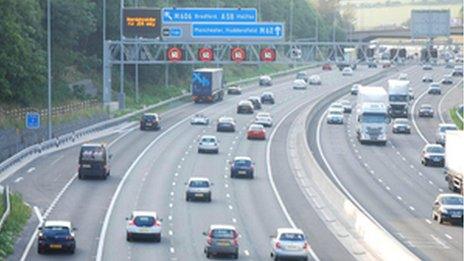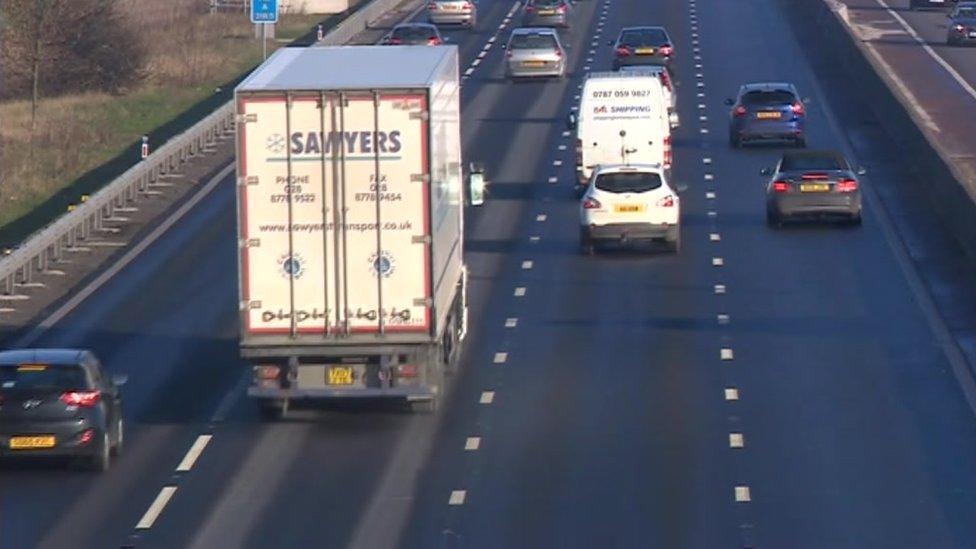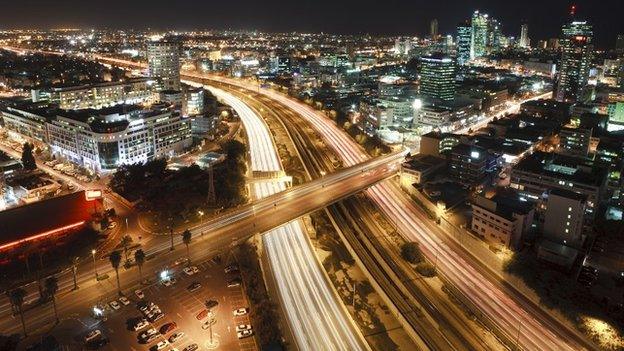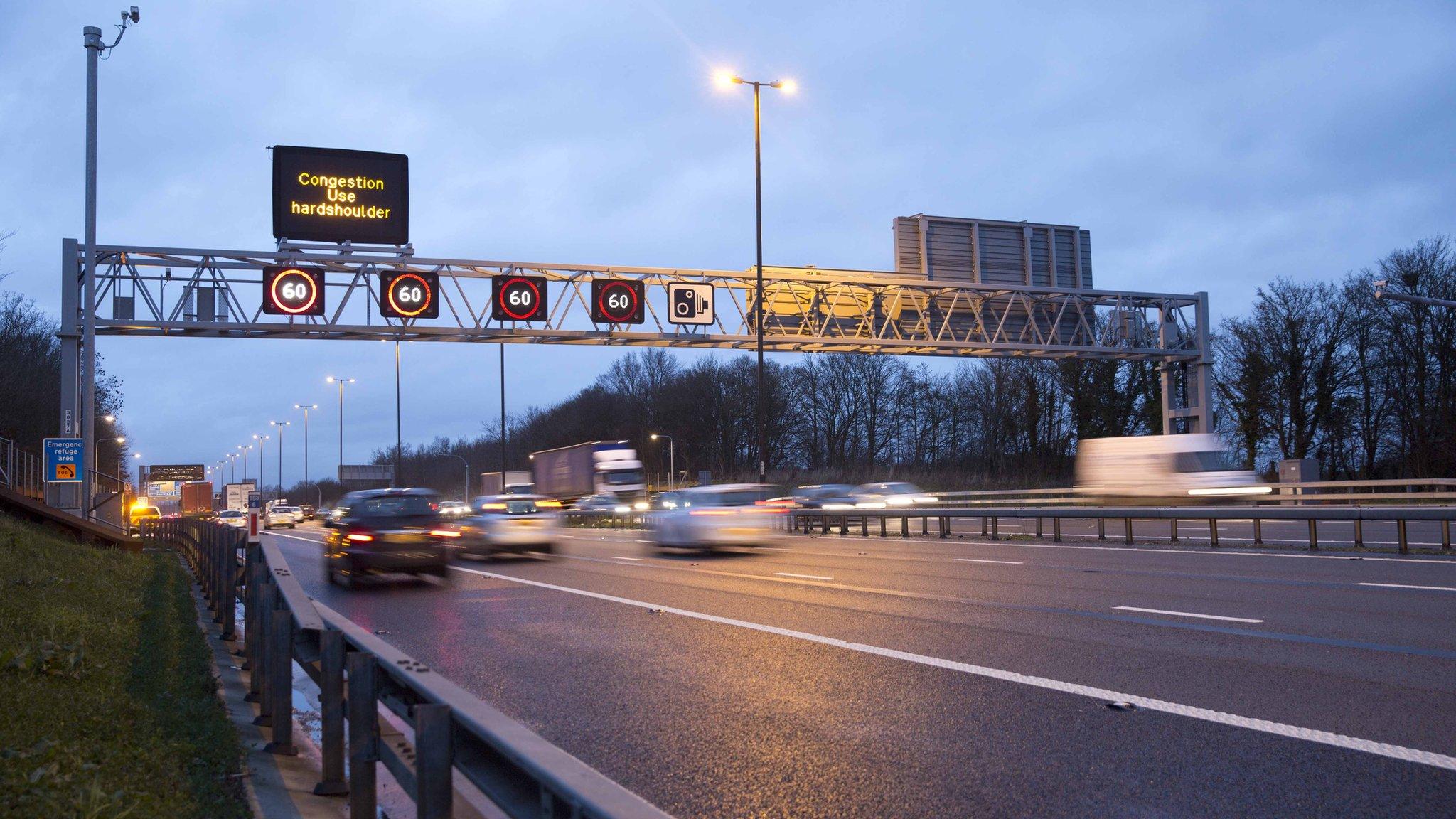Scrap dangerous motorway hard shoulder plans, MPs warn
- Published
- comments

Plans to convert more hard shoulders into permanent driving lanes to ease motorway congestion should be scrapped, a Commons committee has said.
The government intends to turn hundreds of miles of hard shoulder in England into permanent lanes, known as "all-lane running", to expand capacity.
The Transport Select Committee said the "dramatic change" would be dangerous.
The Department for Transport said "all-lane running" was designed to be as safe as ordinary motorways.
It is already in operation in sections of the M25, M1 and M6 and plans for the scheme to be used in parts of other motorways - including the M3 and M23 - are in place.
"Smart motorway" schemes only use the hard shoulder at peak times or during periods of congestion.
With motorway traffic forecast to increase by up to 60%, external from 2010 rates by 2040, permanently converting hard shoulders into traffic lanes is seen by some as a cheaper and less disruptive solution than widening motorways with extra lanes.
'Genuine concern'
But the report published on Thursday, external by the transport committee warns ministers to call a halt to "all-lane running" schemes, saying there are major safety concerns.
The MPs did not agree with the government that future schemes were an "incremental change" or a logical extension of previous schemes, where hard shoulders were used during rush-hour congestion.

Analysis

By Richard Westcott, BBC transport correspondent
You might have already driven on something called a "smart motorway". It's where they open the hard shoulder to traffic when it's really busy, often cutting speed limits at the same time. They've been around for a while and the stats show they ease congestion and cut accidents, because it's easier to control the traffic.
"All-lane running" is different. It's where the hard shoulder will be open all the time, and for governments it's a cheaper way of increasing road capacity without laying down more tarmac.
But some loud voices, including the RAC and AA, say they're not convinced the current design for "all-lane running" is safe. They argue that the emergency run-off areas are smaller and further apart than on smart motorways.
And they say drivers are less likely to obey lane closures when there's an accident because they'll get used to using the hard shoulder all the time.
One motoring expert described it to me like this. Smart motorways have a belt and braces for safety. "All-lane running" takes away the belt and half the braces.
They want more pilot schemes and some design changes to prove it's safe.

Louise Ellman MP, chairwoman of the Transport Select Committee, told BBC Radio 5 live: "Our concern is about the very dramatic change which is being proposed in schemes called "all-lane running", where there will never be a hard shoulder, where there are far fewer emergency refuges, and where there is less information on the motorway to tell motorists just what is happening."
She said "all kinds of drivers", including the emergency services, were "genuinely concerned" about the risk the permanent removal of the hard should presented.
It was "undeniable" that a solution to traffic growth was needed, but the government's scheme was not "the safe, incremental change the Department [for Transport] wants us to think it is", she said.
The MPs say a scheme on the M42 had a good safety track record, but newer schemes were less safe and public awareness about how and when to use the hard shoulder was insufficient.
Plans are in place to permanently convert the hard shoulder into a traffic lane on about 300 miles of motorway, with 30 schemes proposed.
'Driver's worst fear'
David Bizley, of motoring organisation the RAC, said longer trials were needed to make sure the new schemes were safe.
"Whilst supporting smart motorways as a cost-effective and relatively rapid way of increasing motorway capacity, the RAC has repeatedly expressed concerns about the latest design which turns the hard shoulder on motorways into a permanent running lane," he said.
Edmund King, president of the AA, said: "Breaking down on a motorway in a live running lane is every driver's worst fear.
"Whilst we need to increase capacity and reduce congestion we must ensure that we are not cutting corners which compromise safety just to reduce costs."
A Department for Transport spokesman said: "All-lane running roads are designed to be as safe as ordinary motorways."
Two trial sections of "all-lane running" on the M25 saw accidents down 17% and casualty rates down 21% in the first year, he said.
"As the committee recognise, the busiest journey times have almost halved, and overall journey times are more reliable and predictable than before.
"We will be considering all the Transport Select Committee's findings carefully and responding shortly."
- Published13 April 2016

- Published16 February 2016

- Published12 August 2015

- Published23 July 2015
